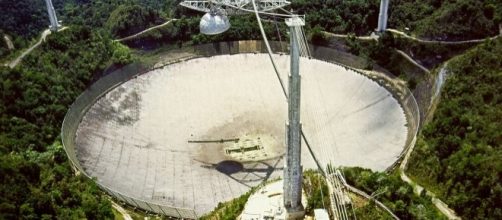Scientists have discovered the mystery behind the strange signals from space that were detected in May by the Arecibo Observatory in Puerto Rico. Unfortunately, for many alien seekers, the signal from red dwarf Ross 122 turned out not to be from aliens. In other space news, there is information about the rare discovery made by scientists of a rare superluminous supernova.
What was behind the strange signal from Ross 122?
The strange signals from Ross 122, which were officially named “Weird!”, turned out not to be from extraterrestrial life or from a solar flare.
Instead, astronomers discovered that it was interference from a distant man-made satellite. Abel Mendez, a professor at the University of Puerto Rico in Arecibo, said that many people were interested in the signals because they might be proof of an intelligent extraterrestrial civilization.
However, the team studying the signal determined that the best explanation for its source is that it was from one or more geostationary satellites. Mendez said that the signals seemed to be coming from Ross 122 because it is found near the Earth's celestial equator where a lot of geostationary satellites are placed.
More about the rare superluminous supernova
The superluminous supernova, named DES15E2mlf, was first detected back in November 2015 by the Dark Energy Survey (DES) collaboration at the Cerro Tololo Inter-America Observatory in Chile.
Since then follow up observations of the supernova have been conducted at the same site using the Gemini Multi-Object Spectrograph on the Gemini South telescope. Now DES astronomers have released their findings on the supernova in the astronomy journal, 'Monthly Notices of the Royal Astronomical Society.'
The supernova was created by the death of a massive star located in a far away galaxy 10 billion years ago and occurred 3.5 billion years after the big bang.
Not only is this one of the most distant supernovas that scientists have ever discovered but it is also one of the brightest. It is over three times as bright as the combined 100 billion stars located in the Milky Way galaxy.
These types of supernovas form following the collapse of a massive star and are anywhere from ten to one hundred times brighter than a normal supernova. There is still a mystery behind these supernovas as astronomers do not know what kind of stars cause these or why they have such a high luminosity.


